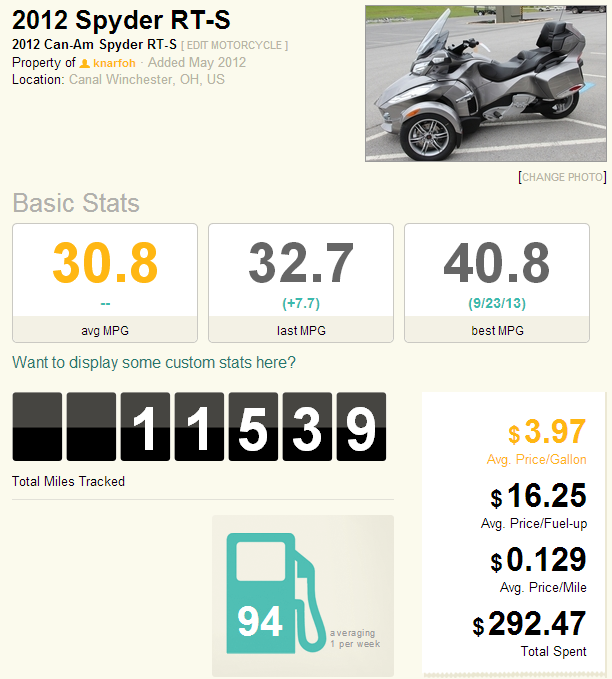Whenever I state "highway", I mean highway, and not interstate. When you reach real interstate speeds, that is when you will really start to see a decrease in MPG. I will actually drive many more miles out of my way to stay off the interstate. Out of all of the miles on my RT, less than 1% have been on the interstate. It isn't just because of the required speed, but the most interesting things to see are mostly seen on roads less traveled.
When I drive the RT, on top of using ECO, I gauge my speed by the resistance I feel on the front end. The stronger the head-wind, the lower the speed. Again, it isn't just because of MPG. I find the higher the resistance, the higher the noise and stress. I ride my RT to be comfortable and stress free. If that weren't enough reason, my wife doesn't enjoy the ride when we go by things so fast that her eyes can't take it all in. The RT is our ride, not just mine, so I'm always mindful of her. I'm lucky enough to have a wife that loves to go on every ride with me; the least I can do is pilot it in a style that is pleasing to her (words to the wise).
For those who are only getting around 30 MPG, I don't think you would be happy doing what it takes to get 40+ MPG. It takes constant attention to a light right hand, a very light right foot, and lot of planning routes. After applying these techniques for a few months, they become second nature. You'll never achieve it going 70 MPH (unless you have a 30 mph tailwind). I always feel a challenge every time I'm on the RT, on one of my other bikes, or in my car to see if I can beat the MPG from my last tank. There are also the side benefits of the effects of lower RPM on the engine (longer life), and less friction on the tires (longer wear).
This thread was created not to imply that the RT should be getting this kind of mileage, but rather is capable of getting this kind of mileage. Getting a higher MPG once is nice (maybe you had a good tailwind on that trip), but those who can get it tank after tank are applying these techniques.

